News
Cleaning up Colours
4 Sep 2014The ‘Southampton 6 report’ from McCann et al (2007) highlighted potential issues relating to hyperactivity in children and suggested correlation to the use of six artificial colours: sunset yellow (E 110), quinoline yellow (E 104), carmoisine (E 122), allura red (E 129), tartrazine (E 102) and ponceau 4R (E 124). In response to the ‘Southampton […]

The ‘Southampton 6 report’ from McCann et al (2007) highlighted potential issues relating to hyperactivity in children and suggested correlation to the use of six artificial colours: sunset yellow (E 110), quinoline yellow (E 104), carmoisine (E 122), allura red (E 129), tartrazine (E 102) and ponceau 4R (E 124).
In response to the ‘Southampton 6’ report, a European Union-wide mandatory warning is required on any food and drink (other than alcohol > 1.2%) that contains any of the six colours, advising that the product ‘may have an adverse effect on activity and attention in children’.
As a result, colours have become particularly high profile in recent years in relation to ‘clean label’ and ‘natural’. They have been replaced with a range of alternatives which are considered to deliver ‘clean label’ credentials. These alternatives, however, do come with stability issues when exposed to heat, light or changing pH.
However: clean label is holistically ideal, in that it delivers the opportunity for product developers to respond to consumer demand, enable them to re-connect with food and the ingredients, provide a perceived healthier proposition and, most importantly, help regain the trust between ‘industrial’ entities and consumers. Since there is deep cynicism amongst some consumers regarding large scale food and beverage processing, this mechanism to regain trust essential. The move to cleaner labels can, however, provide a series of challenges – and stability and shelf life must be considered the primary issues.
Colours have had particular technical difficulty in making the transition to natural alternatives. Ingredients such as ‘beetroot red’ (E162), which deliver clean label credentials, are less stable, pH-sensitive and may not be as widely applicable as the artificial alternatives. This requires a close relationship and dialogue with colour suppliers to ensure that the ‘natural’ alternative selected is actually suitable for a given product matrix. The stability of the colour, and in particular the photosensitivity, is of paramount importance; after all, it is the fundamental feature of the product’s visual impact, and only through careful shelf-life studies can the appeal of the product throughout its life be assured. It is also important to consider the context for the use of natural colours, since much of the agenda is driven by consumer opinion. Again, taking the example of ‘beetroot red’, does the presence of ‘beetroot’ in a strawberry beverage, for example, constitute clean label or does it in fact suggest a large degree of processing that the clean label themes are in fact trying to overcome?
These issues form some of the great paradoxes of the clean label movement, since modern food and beverage production has built great success on stable and homogenous products, and it will take some time for consumers to re-adjust to acceptable variation within products. This is also leading to the exploration of technologies such as encapsulation and nanotechnologies which may enhance colour stability. The danger here, however, is the use of new and emerging technologies to overcome the functional challenges of using natural colours may fly in the face of the clean label intentions that were initially driving the changes.
Related news
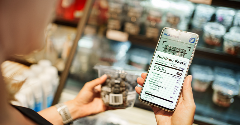
Has ‘clean’ had its day?
22 Dec 2025
Wielding clean-label positioning and fortification as marketing levers is a dangerous strategy, and brands would be better off explaining the hows and whys of the ingredients in their products, say experts.
Read more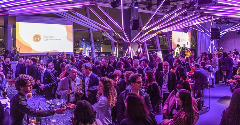
Celebrating the winners of the Fi Europe Innovation Awards 2025
3 Dec 2025
Food industry stakeholders celebrated as the winners of the Fi Europe Innovation Awards were announced at a ceremony in Paris.
Read more
Alternative protein startups pivot to B2B ingredients amid funding shift
27 Nov 2025
Alt protein startups are pivoting from consumer meat analogues to high-value B2B ingredients, driven by stronger investor interest, better margins, and clearer commercial pathways.
Read more
Walmart Marketplace’s record growth prompts search for UK sellers
26 Sep 2025
Walmart’s third-party e-commerce platform, Marketplace, has witnessed extraordinary growth – but a need for more product diversity has prompted the retailer to recruit UK sellers.
Read more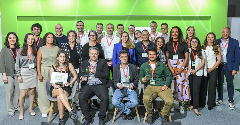
The winners of Vitafoods Europe Startup Challenge 2025 revealed
29 May 2025
Four startups – Yomio Drops, PFx Biotech, Revobiom, and Favamole – took top prizes at this year’s Vitafoods Europe Startup Challenge awards.
Read more
East takes on West in the fight for future food flavours
30 Apr 2025
Asian and South American flavours are now key components on global menus, driven by a growing global appetite for culinary mashups.
Read more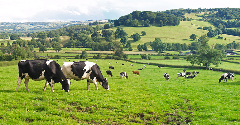
Food companies urged to bring ‘joy’ and urgency to healthy food mission
14 Mar 2025
For too long, businesses have treated health and sustainability as separate agendas – but there is growing evidence to show diets that benefit human health can also enhance that of the planet, say experts.
Read more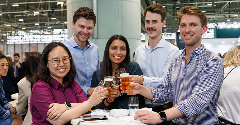
Entries open for inaugural Vitafoods Europe Innovation Awards
29 Jan 2025
Entries are open for the inaugural Vitafoods Europe Innovation Awards, celebrating the ingredients, finished products, partnerships, and initiatives redefining the nutraceutical landscape.
Read more
Paris Olympics: Food and beverage brands champion health, fun, and sustainability
5 Aug 2024
Food and beverage brands are aligning with the Paris Olympics 2024 Food Vision, which emphasises sustainability, local sourcing, and plant-based diets.
Read more
Natural Remedies: Bringing health and happiness via validated branded ingredients
18 Apr 2024
Natural Remedies is an internationally renowned botanical healthcare company committed to advancing the field through rigorous research and the development of clinically validated Branded Ingredients. Guided by our foundational principle of ‘BEING USEF...
Read more